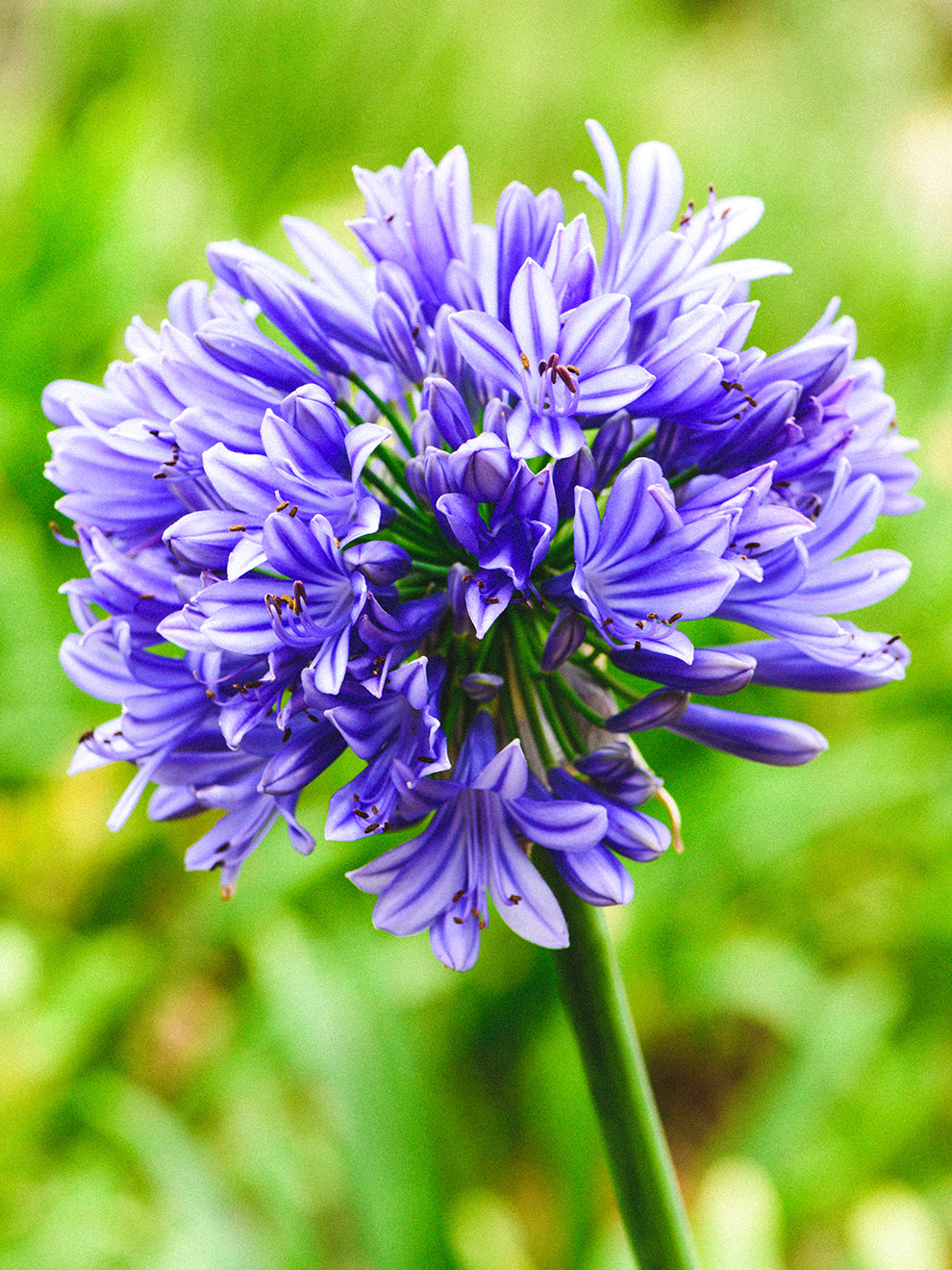Unleashing the Secret to Successful Agapanthus Farming: Advice for a Flourishing Garden
In the realm of horticulture, growing agapanthus successfully needs a strategic method that incorporates numerous aspects of plant treatment. By recognizing the nuances of agapanthus growing, one can develop a setting where these plants flourish and flower perfectly.
Planting Agapanthus: Finest Practices
When growing Agapanthus, correct soil preparation is necessary for making certain successful growth and advancement of these attractive flowers. Agapanthus, typically called Lily of the Nile or African lily, grows in well-draining dirt with a somewhat acidic to neutral pH level - Agapanthus. Before planting, it is important to change hefty clay dirts with natural matter such as compost or peat moss to enhance drain and supply crucial nutrients for the plants
To plant Agapanthus, choose a location that receives full sunlight to partial shade, as this will promote healthy growth and abundant flowering. Dig a hole twice the diameter of the plant's origin round and place the Agapanthus at the same depth it was previously growing. Carefully backfill the opening with soil, pressing down firmly to eliminate any kind of air pockets around the origins.
Water the freshly planted Agapanthus completely and remain to keep the dirt equally wet, specifically throughout the plant's energetic growing season. Agapanthus. Applying a balanced fertilizer once a month can even more support the plant's development and blooming. By adhering to these finest practices for planting Agapanthus, you can create a stunning display of these captivating flowers in your garden
Perfect Dirt Issues for Agapanthus
For ideal growth and growing success of Agapanthus plants, making certain the dirt conditions are ideal is crucial. Agapanthus prospers in well-draining dirt with a slightly acidic to neutral pH level ranging from 6.0 to 7.0. This sort of dirt enables ample water drainage, preventing waterlogging which can bring about root rot. To improve soil water drainage, think about adding natural matter such as garden compost or peat moss when preparing the planting website. Additionally, Agapanthus chooses dirt that is rich in nutrients, so incorporating a balanced fertilizer throughout the growing period can promote healthy and balanced growth and vivid flowers.

Watering and Fertilizing Tips
To ensure healthy and balanced development and vibrant blossoms, correct watering and fertilizing techniques are important for effective Agapanthus visit this website farming. Agapanthus plants benefit from regular watering, especially during the expanding season.
When it comes to feeding Agapanthus, a balanced fertilizer with equivalent parts nitrogen, phosphorus, and potassium can be applied in the springtime to advertise healthy growth and blooming. Slow-release plant foods are suitable for offering nutrients progressively over an extensive period. Stay clear of over-fertilizing, as this can result in excessive vegetation growth at the cost of blooms.
Additionally, including organic issue like compost right into the soil can boost nutrient levels and boost dirt structure, helping in the overall health and wellness of the Agapanthus plants. By following these watering and fertilizing tips, garden enthusiasts can ensure their Agapanthus plants flourish and generate spectacular display screens of flowers.
Trimming and Deadheading Techniques
Appropriate trimming and deadheading techniques play a vital duty in preserving the wellness and visual appeals of Agapanthus plants, matching the essential methods of watering and feeding for successful growing. Trimming Agapanthus entails removing invested flower heads, dead or yellowing leaves, and general shaping of the plant to promote far better growth. Deadheading, the process of getting rid of discolored blossoms, not only boosts the plant's appearance however also encourages additional growing.
When deadheading Agapanthus, it is advisable to snip off the flower stem at the base utilizing sharp, clean shears. This procedure redirects the plant's energy from seed manufacturing back right check out this site into origin and vegetation development, advertising a healthier and extra robust plant. Regular deadheading can extend the flowering period of Agapanthus and stop self-seeding, which can bring about congestion.
In regards to trimming, Agapanthus usually benefits from a light trim after flowering to clean up the plant and encourage fresh development. Reducing the invested blossom stems and removing any dead or damaged vegetation assists preserve the plant's vigor and overall look. However, it is necessary to avoid reducing right into the crown of the plant, as this can deteriorate its health and wellness.

Protecting Agapanthus From Vermins and Diseases
Applying effective bug and disease monitoring strategies is critical to protecting the wellness and vitality of Agapanthus plants in farming. One common parasite that affects Agapanthus is the Agapanthus borer, a caterpillar that passages right into the plant, causing damages to the blossoms and fallen leaves.
In enhancement to bugs, Agapanthus are prone to illness such as origin rot and fungal leaf places. By remaining alert and attending to insect and disease problems without delay, garden enthusiasts can aid their Agapanthus grow and prosper.

Conclusion
In verdict, effective cultivation of agapanthus calls for proper growing methods, ideal soil problems, sufficient watering and fertilizing, routine trimming and deadheading, and security from pests and diseases. By complying with these tips and methods, gardeners can make sure a flourishing garden full of attractive agapanthus blooms. Agapanthus. Keep in mind to keep consistent care and focus to detail to promote the wellness and longevity of these sensational plants
When growing Agapanthus, proper dirt prep work is important for making sure effective growth and advancement of these my blog attractive flowers.Water the recently grown Agapanthus extensively and continue to maintain the dirt evenly damp, specifically throughout the plant's active expanding period.For ideal development and blooming success of Agapanthus plants, ensuring the soil problems are excellent is crucial. When hair transplanting or growing Agapanthus, make certain the soil is well-prepared to offer the necessary foundation for the plants to develop themselves efficiently. One usual parasite that affects Agapanthus is the Agapanthus borer, a caterpillar that tunnels into the plant, causing damage to the flowers and fallen leaves.